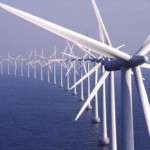News that Dominion Virginia Power has won an auction to lease about 113,000 acres about 27 miles off Virginia Beach for an offshore wind turbine farm is welcome, but don’t expect anything to happen right away.
Dominion won the rights to develop the shallow waters from the Interior Department for $1.6 million. A wind farm at the location should be able to provide power to about 700,000 homes, a size comparable to a good bit of Northern Virginia.
But environmentalists have been skeptical about Dominion’s intentions given its reliance upon coal-fired plants and nuclear power stations. They have worried that Dominion might sit on the leases while it pursues other sources of nonrenewable energy that are far cheaper, notably natural gas. Dominion just won approval for a new, 1,358-megawatt gas plant in Brunswick County.
Another issue is Virginia’s laissez-faire attitude on forcing the development of renewable energy.
To encourage the development of clean energy, many states set renewable portfolio standards (RPS) dictating the percentage of a state’s energy sourcing that must come from wind, solar or other renewable source by a certain date.
Massachusetts has set a 15 percent standard to be met within a decade or so. New Jersey’s is 22.5 percent. Maryland’s is 20 percent by 2020. Virginia’s is 15 percent by 2025.
There’s one big difference, however. Virginia’s RPS is just a voluntary goal and has no legislative teeth. That could cause problems because wind power remains more expensive than coal or natural gas. There are differing opinions about whether wind is cheaper than nuclear power. Over the long term, wind may be the winner.
Dominion is under pressure from the State Corporation Commission to go with the cheapest form of energy available. If there were an enforceable renewable standard, it would be easier for the regulators to approve rate hikes for consumers to pay for wind power.
Besides such problems, there are reasons why wind is the way to go in the Old Dominion. The turbines would be in relatively shallow water of about 100 feet. Hampton Roads has plenty of fabricating plants to assemble turbines and platforms, plus lots of experienced labor.
There’s one other advantage. Since several major highways crossing area waters use tunnels, there are no bridges to restrict the movement of equipment to the lease area. That’s not the case in New England, where a small farm is planned off Cape Cod.
All in all, the Virginia wind power announcement is a step forward.



